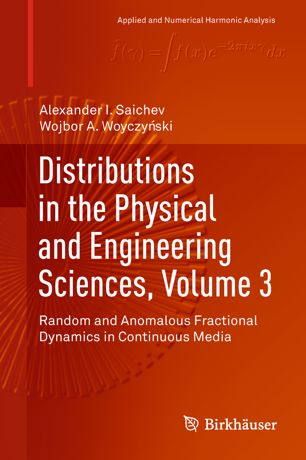

Most ebook files are in PDF format, so you can easily read them using various software such as Foxit Reader or directly on the Google Chrome browser.
Some ebook files are released by publishers in other formats such as .awz, .mobi, .epub, .fb2, etc. You may need to install specific software to read these formats on mobile/PC, such as Calibre.
Please read the tutorial at this link: https://ebookbell.com/faq
We offer FREE conversion to the popular formats you request; however, this may take some time. Therefore, right after payment, please email us, and we will try to provide the service as quickly as possible.
For some exceptional file formats or broken links (if any), please refrain from opening any disputes. Instead, email us first, and we will try to assist within a maximum of 6 hours.
EbookBell Team

5.0
58 reviewsContinuing the authors’ multivolume project, this text considers the theory of distributions from an applied perspective, demonstrating how effective a combination of analytic and probabilistic methods can be for solving problems in the physical and engineering sciences. Volume 1 covered foundational topics such as distributional and fractional calculus, the integral transform, and wavelets, and Volume 2 explored linear and nonlinear dynamics in continuous media. With this volume, the scope is extended to the use of distributional tools in the theory of generalized stochastic processes and fields, and in anomalous fractional random dynamics.
Chapters cover topics such as probability distributions; generalized stochastic processes, Brownian motion, and the white noise; stochastic differential equations and generalized random fields; Burgers turbulence and passive tracer transport in Burgers flows; and linear, nonlinear, and multiscale anomalous fractional dynamics in continuous media. The needs of the applied-sciences audience are addressed by a careful and rich selection of examples arising in real-life industrial and scientific labs and a thorough discussion of their physical significance. Numerous illustrations generate a better understanding of the core concepts discussed in the text, and a large number of exercises at the end of each chapter expand on these concepts.
Distributions in the Physical and Engineering Sciences is intended to fill a gap in the typical undergraduate engineering/physical sciences curricula, and as such it will be a valuable resource for researchers and graduate students working in these areas. The only prerequisites are a three-four semester calculus sequence (including ordinary differential equations, Fourier series, complex variables, and linear algebra), and some probability theory, but basic definitions and facts are covered as needed. An appendix also provides background material concerning the Dirac-delta and other distributions.